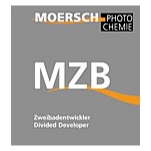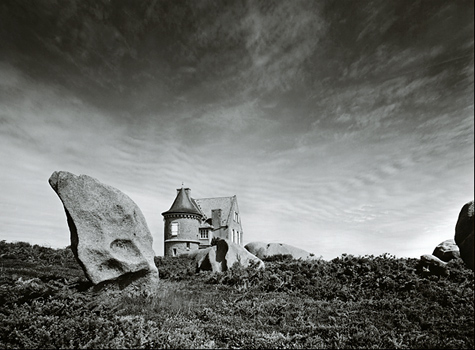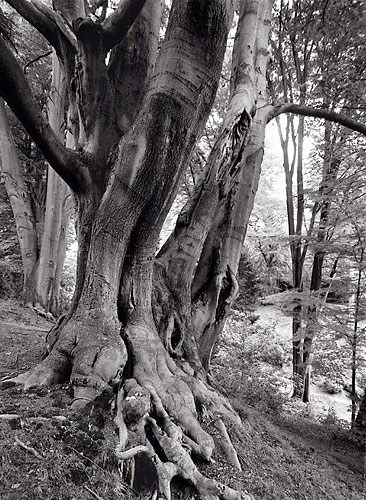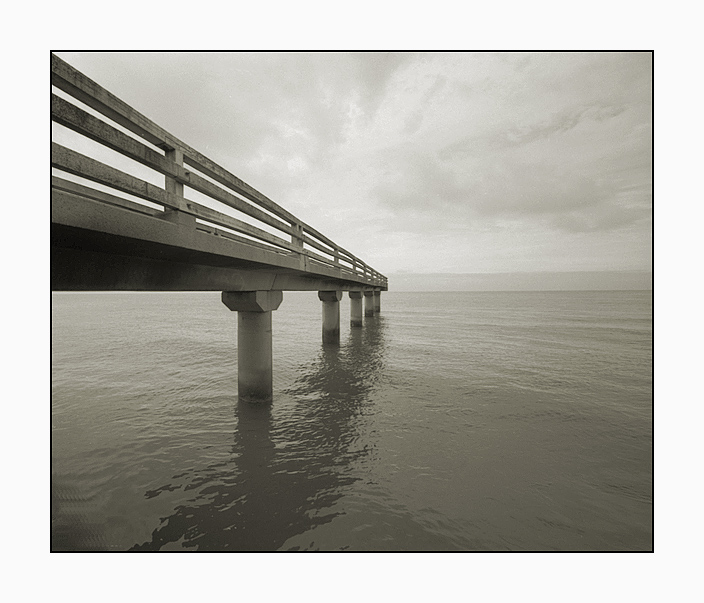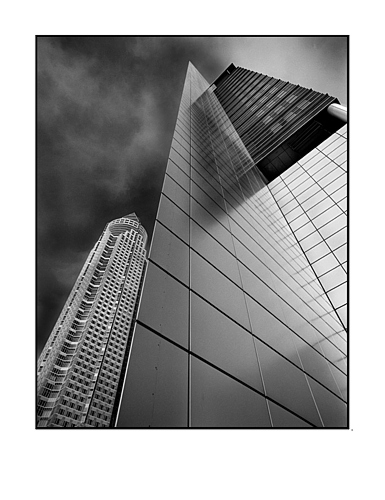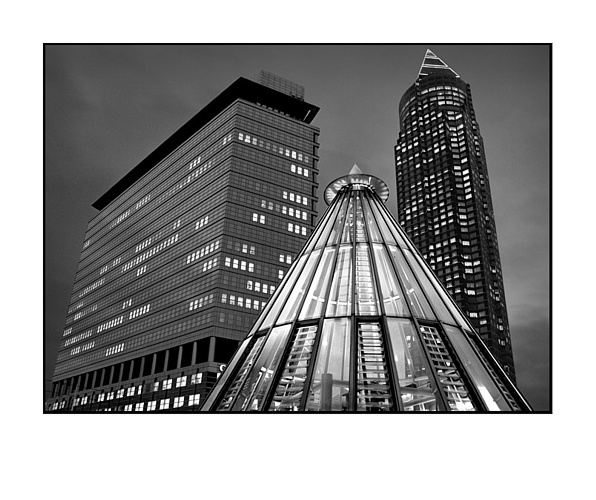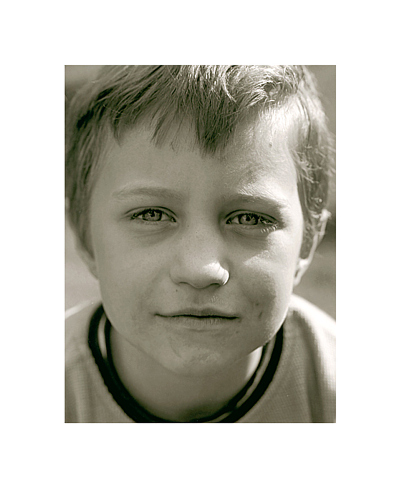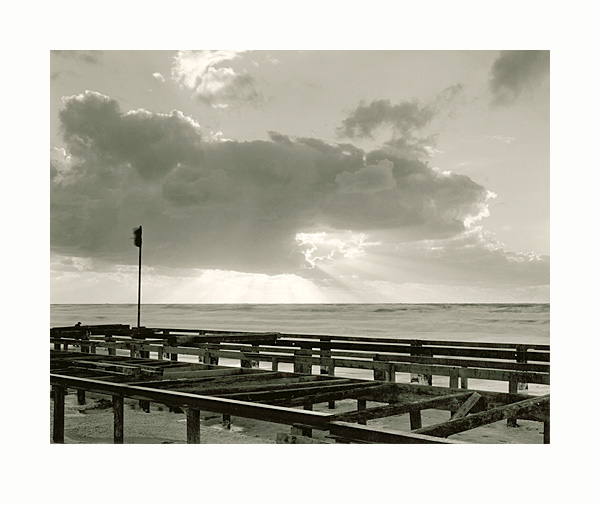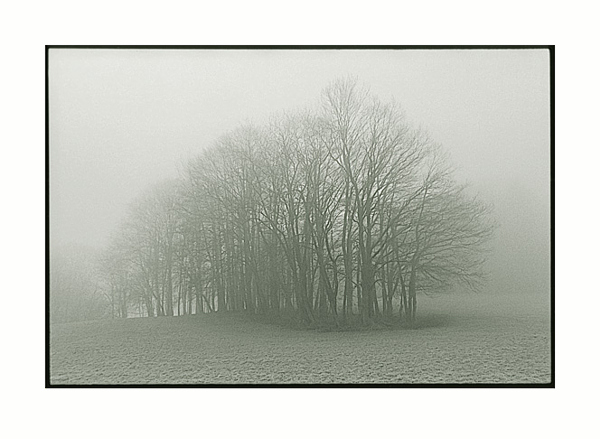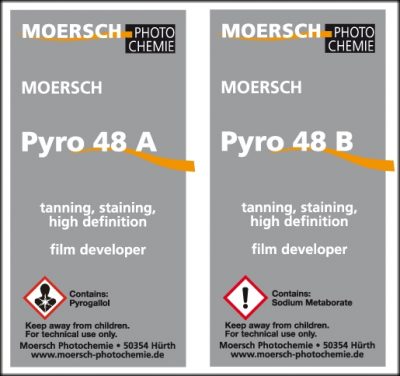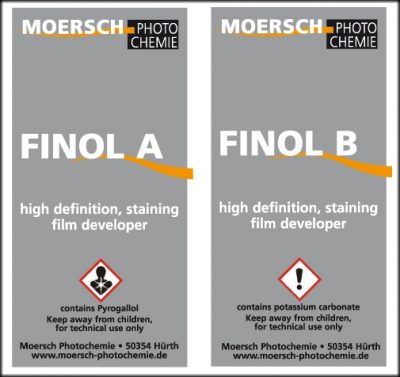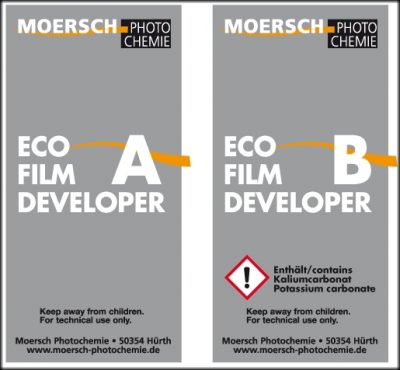Description
The idea of two-bath development is not new, a wide variety of formulations are known. However, until now it was often not possible to combine good contrast compensation with high contour sharpness.
The idea of two-bath development is not new, a wide variety of formulations are known. However, until now it was often not possible to combine good contrast compensation with high contour sharpness. This problem has now been solved by MZB: the developer clearly balances contrast while at the same time providing high contour sharpness and a very fine grain. The result is harmoniously graded negatives that are also characterised by the fact that they can be enlarged unusually well.
The idea of two-bath development is not new, a wide variety of formulations are known. However, until now it was often not possible to combine good contrast compensation with high contour sharpness. This problem has now been solved by MZB: the developer clearly balances contrast while at the same time providing high contour sharpness and a very fine grain. The result is harmoniously graded negatives that are also characterised by the fact that they can be enlarged unusually well. Moreover, the MZB was designed not only for tank development but also for tray development of sheet film.
Not every photographer is willing or able to work according to the zone system, especially in 35mm photography this is only possible to a limited extent.
If the negative densities are too high, the result is that the highlights are not differentiated in the print, if at the same time the shadow areas are to be cleanly separated.
This problem occurs increasingly with modern emulsions and can only be solved with conventional development methods by shortening the development time. The disadvantage of this method is a reduction in the sensitivity of the film.
With the MZB, a different approach is taken. If the determined film speed is adhered to, the gradation curve is bent exclusively in the area of the highlights, and if the suggested times are applied, it is bent by about one zone in the high-lights. Without going into more detail about the zone system, it should only be said for a better understanding that from zone VII onwards the curve is slightly flattened. MZB is so flexible that an even greater reduction of the negative density is possible at any time without a loss of sensitivity. The photographer must decide for himself whether this makes sense, because there are usually many pictures with normal contrast on a 35 mm film. The point is not to have to worry about tonal rendition when taking pictures.
One of the special properties of MZB is its extreme good-naturedness with regard to processing tolerances. In particular, its insensitivity to temperature fluctuations should be emphasised, which allows the standard temperature of the developer to be set at 24° without further ado. Thus, the processor who does not have a constant temperature control option need not worry: It is sufficient to temper the two solutions to 24° immediately before processing.
It should also be emphasised that the developer allows a comfortable margin for overexposure. Nevertheless, the same applies here: What is lacking in light, even this developer cannot conjure up in the film.
In contrast to the manufacturer's specifications, which usually indicate a film speed that is too high for competitive reasons, with the result that the negatives become too steep due to the necessary development extension, the enclosed table indicates the exact sensitivities. So don't be irritated by the fact that these sensitivities differ from the manufacturer's specifications. In accordance with ASA and DIN standards, my specifications refer to a sensitivity point of 0.10 logD and therefore correspond to the effective film sensitivity. If the target density of 0.12 logD for Zone I is only just missed, a sensitivity setting one third stop lower is therefore recommended.
The MZB is prepared as powder for 2×2 litres stock solution. The solutions are stable, even in partially filled bottles, for at least six months, under exclusion of air for one year according to available experience.
Higher dilutions than recommended in the instructions are also possible. However, the resulting increase in capacity comes at the cost of contrast compensation, with the sensitivity setting remaining unchanged. The necessary extension of the development time straightens the gradation curve in the highlights. If contrast compensation is desired even at higher dilutions, the film speed must be reduced by one to two DIN. In this case, the entire gradation curve is flattened somewhat.
For rotation development, dilute both solutions 1+1. Because of the high agitation during rotation development, a clearly pronounced contrast balance is not possible at nominal sensitivity.
When using large developing tanks for the development of only one film, the alkaline solution B can be used up with a dilution 1+2 (as a one-shot developer) before the capacity limit of the A solution is reached.
Because of the reproducibility of values once determined, it is suggested to use the B solution only once or twice. This should be observed for small solution quantities. If, on the other hand, a filling quantity of 700ml or more is required for a roll of film, the working solution can be used several times without any loss of performance.
If the B solution is used undiluted, it can be used several times. A second bath with the stock solution is recommended if a slightly higher film speed is desired. Some films, such as Acros 100 or the low-sensitivity Efke films, require a slightly stronger alkaline solution to achieve the nominal sensitivity. In this case, the can should only be tilted twice a minute for a shorter time. Single bath, i.e. mixing A and B solution is also possible, but only makes sense if contrast equalisation is not required. The most favourable mixing ratio is then two parts A : one part B : six to eight parts water. If only one of the two solutions is used up, "refill packs" can be ordered.
Ein Zweitbad mit der Stammlösung wird empfohlen wenn eine leicht erhöhte Filmempfindlichkeit angestrebt wird.
Einige Filme, wie beispielsweise Acros 100 oder die geringempfindlichen Efkefilme, benötigen zum Erreichen der Nennempfindlichkeit eine etwas stärkere Alkalilösung. In diesem Fall darf die Dose nur zweimal pro Minute bei verkürzter Zeit gekippt werden.
Single bath, i.e. mixing A and B solution is also possible, but only makes sense if contrast equalisation is not required. The most favourable mixing ratio is then two parts A : one part B : six to eight parts water. If only one of the two solutions is used up, "refill packs" can be ordered.

